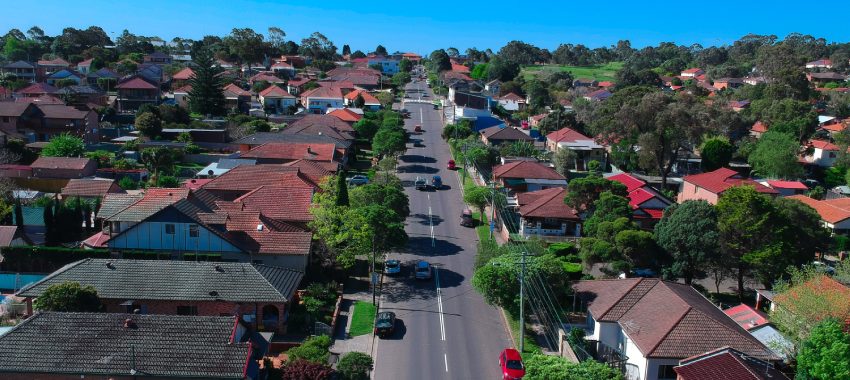
As the date has been set for the federal election, players in the real estate and housing industries have outlined their top priorities.
Hot on the heels of Prime Minister Scott Morrison’s announcement that the next Australian election would be held on 21 May 2022, the Real Estate Institute of Australia (REIA) has asserted the prime concerns for the industry’s professionals as well as the country’s current and prospective home owners.
REIA president Hayden Groves first expressed relief that in this election cycle, debate over negative gearing would not cause hesitancy in the market, with the two major political parties guaranteeing their support of the policy this time around.
However, Mr Groves noted that other tax settings were front of Australians’ minds going into voting booths.
“While it’s a very different market to the pre-election softening in the lead-up to the 2019 federal election, where uncertainty around negative gearing led to a major drop in investor confidence, rising stamp duty taxes continue to be prohibitive for owner occupiers,” Mr Groves noted.
“It’s time to axe the tax. The next government must prioritise the removal of stamp duty as the single biggest tax deterrent to housing supply, affordability and the dream of owning a home.”
But overall, he said that current economic settings, and the recent budget, supported Australian home ownership, calling the current situation “an ideal policy backdrop to support those wanting to buy or invest in property, with bipartisan support for negative gearing providing buyers with a stable environment and peace of mind”.
The Property Investment Professionals of Australia (PIPA), however, believes more could be done to support investors, flagging the undersupply in the rental market as a significant contributor to Australians’ rising housing costs.
PIPA’s chair Nicola McDougall cited figures showing that while investor activity had strengthened to account for 32.6 per cent of mortgage demand by value in January 2022, up from a recent record low of 22.9 per cent, it still fell short of the decade average of 34.9 per cent.
Ms McDougall put the issue down to lending restrictions introduced in 2017 that reduced investors coming into the market.
“It’s not enough for political parties to simply offer piecemeal funding for ‘affordable housing’ when there is currently a critical undersupply of rental properties that was written in the cards in 2017 when lending restrictions came into play,” Ms McDougall said.
She warned that without more investors entering the pool, the country’s already tight rental markets would continue to constrict as international migration gets back to full steam.
“With overseas migration set to soar over coming years, where are these new Aussies going to live if we don’t even have enough rental properties to house our current population?” Ms McDougall queried.
“A system needs to be developed to encourage the private and public sectors to work collaboratively together to increase rental supply and to improve rental affordability for tenants.”
PIPA emphasised the need for low-cost rentals in the market, advocating for political parties to develop “a significant and sustainable policy that increases the supply of rental properties around the nation in the vein of the National Rental Affordability Scheme.”
The scheme, which was designed to provide rental providers with subsidies for providing below-market housing, came into effect in 2008 and ran for six years before being scrapped by the Abbott government.
The Housing Industry Association (HIA), meanwhile, highlighted how highly many voters factor the issue of housing affordability in deciding which candidates to support.
“Recent research commissioned by HIA on home ownership once again confirmed that Australians aspire to own their own home, however many are pessimistic about whether that dream can be achieved,” HIA managing director Graham Wolfe said.
“The research also found that voters in this election put home ownership amongst their top three priorities, after cost of living and health, but before other priorities like education, population growth and infrastructure.
“Clearly home ownership still matters. HIA is keen to hear what policies each party plans to adopt to address this key issue.”
HIA is calling for the political parties to address nine key areas relating to the state of the country’s residential housing in their pre-election commitments: housing supply, land supply, social and community housing, rental housing, population and immigration, taxation, skills and business red tape.
In a pre-election release, Homelessness Australia also released a study that showed how Australians prioritise the issue of housing for the country’s most vulnerable in their election considerations.
The poll, conducted by ARE Media, revealed that 73 per cent of Australian women said their vote at the upcoming federal election would be influenced by the political party that proves committed to providing housing for women in unsafe situations.
The findings were released alongside a national campaign co-jointly launched by Homelessness Australia, Homelessness NSW, The Women’s Housing Company, The Equanimity Project, Lokahi Foundation and Full Stop Australia, advocating for political parties to commit to $7.6 billion in funding ahead of the next election to address the issues that see 49,000 Australian women homeless each night.
[Related: Melbourne and Sydney suburbs at forefront of value declines]
 Login
Login









JOIN THE DISCUSSION